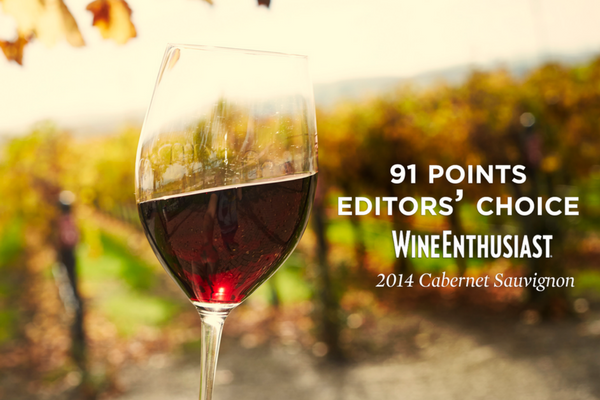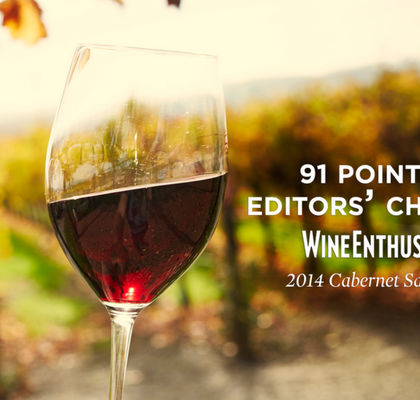For wine lovers, the most influential variable when choosing a wine is, generally, it’s score. If you’re given the choice between an 80-point wine and a 90-point wine, you’re likely going to choose the 90-point wine because it is deemed “better,” but what makes a great wine and what is a good wine score? Let’s take a look at all the variables at play in a wine score with wine ratings explained by our very own Concannon Vineyard team, known for crafting award-winning wines.

The Wine Rating Scale
Wine ratings are based on a 0 to 100 point scale that was developed by Robert Parker, an esteemed U.S. wine critic and author of The Wine Advocate. While not all judges agree with Parker’s scale and criteria, it is the most widely used wine rating scale, and has not only become the U.S. standard, but also an international standard. So what is a good wine score when you’re trying to make a decision?
- 95-100: A classic, superior wine
- 90-94: An all-around phenomenal wine
- 85-89: A very good wine with strong qualities
- 80-84: A good wine that is worth enjoying
- 75-79: A drinkable wine that is not hugely recommended
- 74 or below: This wine is not recommended, a poorly-made and flawed wine
It is important to note that Parker’s originally developed scale was created so that wines with scores of 80’s or higher were recommended and esteemed wines. As consumer preferences changed, scores in the 90’s were seen as attractive wines and scores in the 80’s were seen as sub-par by consumers. When choosing a wine, remember that scores in the 80’s still signify a strong wine.
How Wines are Scored
Now that we’ve covered the wine rating system, let’s explore the different variables at play when a sommelier or judge is scoring a wine. In the simplest terms, the most commonly judged factors are: color, aroma (or bouquet), taste, aftertaste, and the overall quality of the wine. Judges often rate wines by doing a blind test, where the varietal may be known, but the brand is not. Blind tasting help to keep out any personal biases and provide the fairest rating of a wine. Now that we’ve explored how wines are scored, let’s go through the process of rating a wine on your own.
How to Rate Wine
Welcome to the six S’s of wine tasting: see, swirl, smell, sip, swish, and swallow (or spit). Each of the six S’s helps a judge evaluate the color, aroma, taste, aftertaste, and quality of a wine by hitting each of the necessary senses.
- See: Judges generally test the color of the wine by holding up the glass to a white background. The color of the wine generally tells a judge about its body. For example, a dark-bodied wine is one with a deeper red color like a Cabernet Sauvignon, and will generally have a full-body and bold flavors.
- Swirl: You often see wine drinkers swirling their wine before taking a sip. Drinkers swirl wine because it helps spread the wine around the glass and releases aromas from the wine for tasters to experience before (and during) tasting.
- Smell: Once a judge has swirled a wine, they will smell the wine to sense any flavors before tasting. When tasting, avoid strong smelling locations where candles or incense have been burned, and leave the scented sprays at home so that the smells will not interfere with the wine tasting experience.
- Sip: After seeing, swirling, and smelling, a judge will then sip the wine to experience its flavors. While sipping, a judge notes the flavors as the wine hits the tongue, and its taste as it moves around the mouth. While sipping, note the strongest flavors as well as the lighter notes that may not last as long.
- Swish: Once a judge has sipped a wine, they swish it around their mouth to spread the flavor to all of the taste buds. Different taste buds will detect different characteristics of the wine, so it is important to hit all areas.
- Swallow (or spit): After noting the flavors of a wine, a judge will either swallow the wine (or spit it out). Spitting the wine out helps to control the amount of alcohol ingested, and avoid interfering with the palate for proceeding tastes.
As you are evaluating a wine, consider making notes from each of these six S’s so that you can reflect on each as you are scoring the wine.
Concannon Vineyard’s Best Wines by Rating
- 2014 Reserve Cabernet Sauvignon, Mother Vine Vineyard – 93 Points & Gold Medal from the International Wine & Spirits Competition – Sommelier Challenge
- 2015 Concannon Clone 7 Cabernet Sauvignon – 92 Points & Gold Medal from the International Wine & Spirits Competition – Sommelier Challenge
- 2006 Heritage Petite Sirah – Gold Medal, Best of Varietal, & Best of Class at New World International
- 2015 Concannon Vineyard Cabernet Sauvignon – 91 Points from the International Wine & Spirits Competition – Sommelier Challenge
- Captain Joe’s 2014 Reserve Petite Sirah – 90 Points from Wine Enthusiast Magazine




